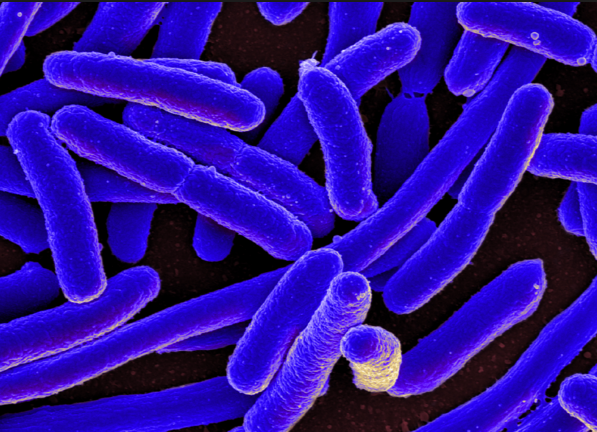Coronavirus fears continue to spark panic buying of isopropyl alcohol and hand sanitizer across the USA
03/04/2020 / By Zoey Sky

If you haven’t prepped your survival stockpile ahead of time, you’re out of luck: Mountain Falls’ 91% Isopropyl Alcohol is currently unavailable on the Amazon store.
As COVID-19 continues to spread, shoppers become more desperate to get their hands on the product, which is a first aid antiseptic and topical antimicrobial. According to the product’s page on the Amazon store, it is unknown “when or if this product will be back in stock.”
Isopropyl alcohol, also called rubbing alcohol, is a must-have in your survival stockpile, especially since it helps prevent the risk of infection if you have cuts or scrapes.
Panic buying shoppers clear rubbing alcohol and hand sanitizer from store shelves
The number of confirmed COVID-19 cases around the globe slowly but steadily increases. As of press time, there are already 103 cases of the infectious disease in the U.S. alone. Shoppers in panic-buying mode are also hoarding hand sanitizer, which has unfortunately made online prices skyrocket. Like Mountain Falls’ 91% Isopropyl Alcohol, hand sanitizer is also out of stock on the Amazon store.
If you don’t have rubbing alcohol in your survival stockpile, the Centers for Disease Control and Prevention (CDC) suggests thoroughly washing with soap and water. If you also don’t have access to soap and water, use a hand sanitizer that contains at least 60 percent alcohol. (Related: Costco runs out of “emergency food kits” following coronavirus outbreak.)
In other areas, such as in St. Louis, stores are also running out of hand sanitizer because of shoppers who are panic buying. A big box store in the area has even resorted to rationing disinfectant supplies to ensure that those who need the products can still get of them.
While in panic mode, shoppers are also stocking up on another product in anticipation of possible shortages: their prescriptions.
A spokesperson from Sam’s Club, a chain of membership-only retail warehouse clubs, commented that shoppers can only purchase five disinfectant products at a time.
How to make your own hand sanitizer
If you were prepping before COVID-19 spread throughout the country, you should already have a stockpile of rubbing alcohol at home.
You can use isopropyl alcohol to make your own hand sanitizer using only a couple of ingredients that are lying around at home.
You’ll need:
- 2/3 cup of 91% isopropyl alcohol
- 1/3 cup aloe vera gel
- Essential oil of your choice for added protection and natural fragrance (optional)
- A bowl and spoon
- An empty container
Steps:
- Mix the aloe vera and isopropyl alcohol. Stir until well blended.
- Add eight to 10 drops of your preferred essential oil to the mixture if you want, then mix well.
- Pour the DIY hand sanitizer into an empty container and seal. Label the hand sanitizer so everyone at home knows what it is. The final product contains 65 percent alcohol.
When choosing an essential oil for your homemade hand sanitizer, use oils like lavender or tea tree oil, which both have antibacterial properties. Using these essential oils will boost the germ-killing power of your hand sanitizer.
Don’t throw away those empty bottles from store-bought hand sanitizer. Wash the outside of the container and refill them again and again with your DIY sanitizer. Another option is to purchase a set of travel-sized squeeze bottles so you can keep some homemade sanitizer in your purse or bug-out bag (BOB).
To use the homemade hand sanitizer, squeeze some onto your palm then rub your hands together. Let the moisture evaporate and the stickiness vanish.
Natural alternatives to rubbing alcohol
There’s no need to panic if you don’t have any rubbing alcohol at home as long as you have these natural alternatives in your pantry.
Bleach can be used as a surface sanitizer and disinfectant since it also kills microorganisms on household surfaces like counters and floors.
To use bleach as a surface sanitizer, dilute one tablespoon of pure bleach in a gallon of water. To disinfect surfaces, increase the bleach concentration to 3/4 cup per gallon of water.
Hydrogen peroxide (H2O2) is cheap and you can use it to clean minor wounds to prevent infection. As a bonus, it doesn’t sting as much as isopropyl alcohol.
Vinegar’s main ingredient, acetic acid, forms due to fermentation. Use vinegar as a non-toxic surface disinfectant.
Now is the time to put your prepping skills to good use. Check stores in your area for rubbing alcohol, or use your stock of isopropyl alcohol to make your own hand sanitizer and maintain proper hygiene.
If you don’t have any isopropyl alcohol, use other alternatives like bleach, H2O2 or even vinegar.
Sources include:
Tagged Under: 2019-nCoV, coronavirus, covid-19, emergency medicine, Gear, grocery, infections, isopropyl alcohol, novel coronavirus, off grid, online market, outbreak, pandemic, panic, Panic Buying, preparedness, prepping, products, Retail, rubbing alcohol, sanitizers, SHTF, Stockpile, supplies, supply lines, survival, survival stockpile, survival supplies, Wuhan coronavirus


















